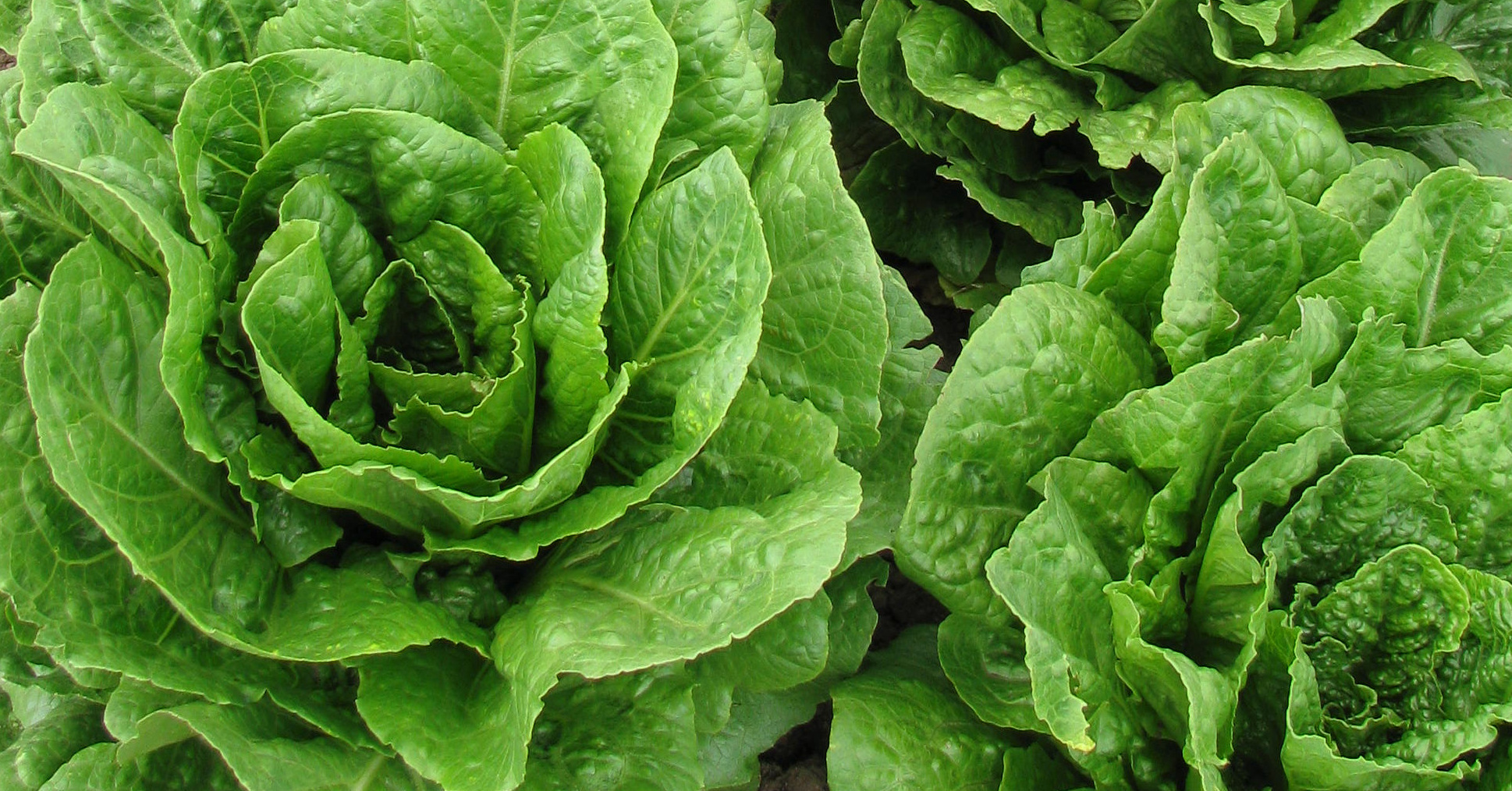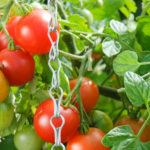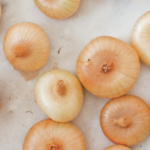Parris Island lettuce is a type of romaine green lettuce that forms upright heads surrounded by wavy attractive looking dark green edible leaves. The heart of the lettuce is creamy to white. Parris Island lettuce is also known as Parris Island Cos lettuce or Parris Island romaine lettuce. It is considered the most nutritious green lettuce and is used mostly raw in a variety of culinary applications such as salads, sandwiches, wraps and tacos. Paris Island Cos is fairly easy to grow and can be raised through direct seeding or as transplants.
Table of Contents
What is Parris Island Lettuce?
Parris Island Cos lettuce is a bonafide member of the Lactuca sativa and daisy family, Asteraceae. Other well known family members include chicory, sunflower, frisee lettuce also known as endive, Boston lettuce and purple lettuce.
As earlier stated, Parris Island Cos is a romaine lettuce type with wavy ribbed leaves and vase-shaped heads which grow as tall as 12 inches or 31cm. The dark green tender and succulent leaves of the lettuce surround creamy to white colored hearts which are located lower down in the head. As far as flavor is concerned, Parris Island Cos has a mild flavor and is more flavorful compared to buttercrunch lettuce, for example.
Pertaining nutritional benefits, Parris Island lettuce has the highest nutritional values among many lettuce types. The nutritional profile of the lettuce includes vitamins C, K, A as well as calcium, folate, phosphorus, magnesium and potassium.
Parris Island romaine is a fairly easy to grow lettuce type and is resistant to lettuce mosaic virus (LMV) and tipburn (TB). Other romaine lettuce varieties include Valmaine, Dark Green Cos, Paris White and Vivian among others. Some varieties are white-seeded while others are black-seeded.
Parris Island Cos Lettuce Origins
Detailed information about the origins of Parris Island lettuce such as its parents are scanty. However, this heirloom lettuce variety has been in existence for no less than 70 years having been developed in the 1950s by Clemson University and the USDA.
The variety was introduced to the U.S. market in 1952. It was named after Parris Island in South Carolina, United States. There is no link between this variety’s name and Paris in France!
In 2020, Parris Island lettuce was identified by the USDA’s Agricultural Research Service (ARS) among five romaine lettuces that “both brown less quickly after fresh-cut processing and are slower to deteriorate postharvest”.
Going into the future and building on its 70 year history, Parris Island romaine lettuce has potential to be used as a parent in the development of new lettuce varieties with long shelf life qualities.
When to Pick Parris Island Lettuce
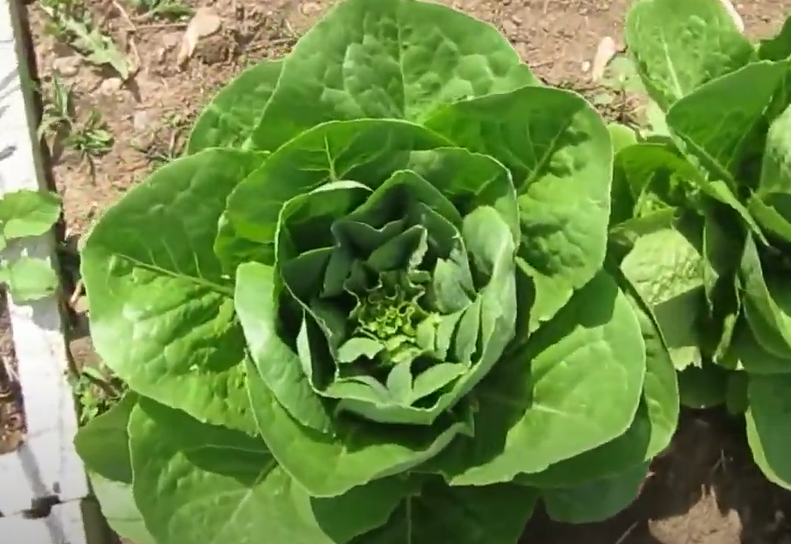
When to pick Parris Island Cos romaine lettuce is a matter of preference. This is because lettuce can be harvested in as little as 3 to 4 days after germination as highly nutritious microgreens. Furthermore, Parris Island Cos can yet be harvested as baby lettuce at about 28 days.
High quality baby lettuces can be realized out of Parris Island lettuce when it is planted close together with zero thinning.
However, picking the lettuce at full maturity after the head develops means waiting some 55 to 70 days for a matured head. During this time outer leaves of the lettuce can be harvested and enjoyed in recipes as this lettuce type is also a cut-and-come-again kind of lettuce. This is to say the outer leafy greens that are harvested regrow.
Eventually, once the head develops, the lettuce will proceed to bolt for seed. Even so, as Parris Island lettuce starts to bolt, its leaves do not turn bitter as quickly as other lettuce varieties do.
Parris Island Lettuce Recipes
Parris Island romaine lettuce is mostly used raw in many recipe applications although it can also be stir-fried and even grilled. As earlier stated, it is suitable for use in salads, wraps, sandwiches and tacos among other applications. It can also be used in juicing recipes that call for lettuce leaves. The following are some scrumptious recipe ideas to try out using Parris Island lettuce.
Parris Island Cos Lettuce Wraps Recipe
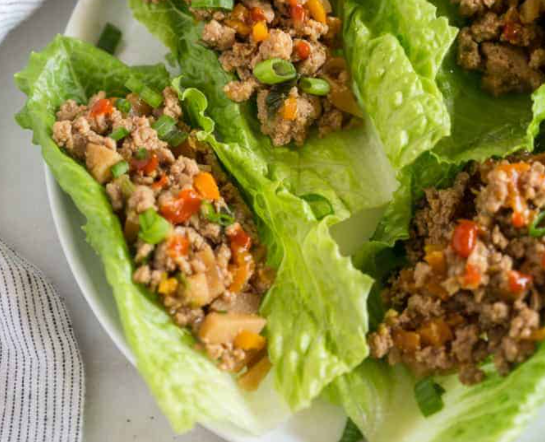
This recipe produces tasty Parris Island lettuce wraps made using chicken. The lettuce introduces a scrumptious crunch to the serving. Any romaine lettuce will do for this recipe. Since we are talking about Parris Island Cos in particular, this will be an opportunity to use just that with delicious results.
The recipe is in three parts. It has the filling, the marinade and the sauce. The sauce will be topped on the filling once it’s been put in the wraps. Although the main filling ingredient is chicken, you could also use turkey or pork with no repercussions.
For the red bell peppers used in this recipe, pimento peppers could also be used in this recipe as they introduce their own unique flavor that enhances the dish. The recipe takes 30 minutes to make and serves 4. View Recipe.
Romaine Lettuce Salad Recipe with Tomato and Cucumber
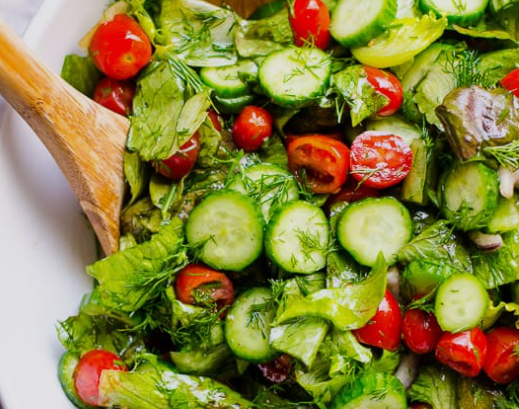
If you prefer and enjoy making easy to follow recipes, this one qualifies. This recipe is open to using a variety of green lettuces. Parris Island lettuce fits very well here. Considered the most nutritious green lettuce, its presence in this recipe alongside tomato and cucumber makes it nutritionally all worth it.
For best results, spin the lettuce leaves dry in a good salad spinner (example) in order to ensure maximum dressing adherence to the leaves. On the tomatoes, Roma tomatoes, black cherry tomatoes, green tomatoes or even pear tomatoes could do it in this recipe.
Since the cucumber will be sliced and used with its skin on, you will need a bitterless cucumber type such as the English cucumber although you could also use Persian cucumber, Armenian cucumber or lemon cucumber with just as good results.
Slice the tomato, onion and cucumber in this recipe using a mandoline (example) for aesthetically pleasing results. This recipe takes only 15 minutes to make and produces 6 large servings or 10 small ones. View Recipe.
Garlic Sauce Parris Island Lettuce Recipe
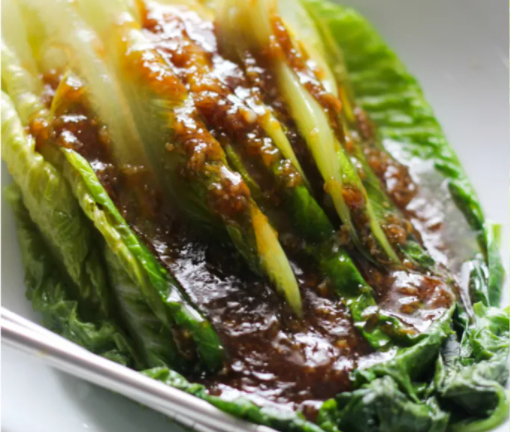
If you are looking for an opportunity to venture into some exotic Chinese dishes, this is a suitable one. This recipe produces a traditional Chinese vegetarian recipe. However, instead of using iceberg lettuce, the recipe will use Parris Island Cos romaine lettuce with equally delicious results.
Other ingredients going into the recipe include garlic, oyster sauce, soy sauce and potato starch among others. The green lettuce leaves will be blanched first in some oil and salted water. Eventually before serving after some intervening steps, the lettuce will be served dressed with some soy sauce. The recipe takes 15 minutes to make and serves 2. View Recipe.
Grilled Parris Island Romaine Lettuce Recipe
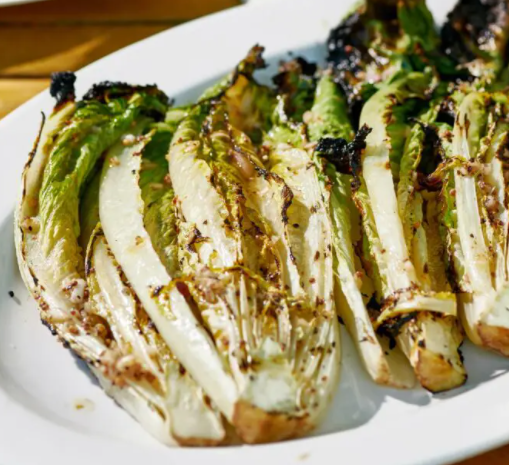
This recipe takes you closer to Italian cuisine where grilled lettuce comes naturally. The Parris Island Cos lettuce used in this recipe is suitable because of its solid structure compared to loose leaf lettuces, for example. The outside of the lettuce will get an inviting chariness with the inside head maintaining its crunch.
The 4 lettuce heads used in this recipe are brushed up with some dressing before they are shoved into the grill. Other ingredients to highlight include olive oil, freshly ground pepper, Dijon mustard and red wine vinegar. All in all the recipe takes only 10 minutes to make and will serve up to 8 people. The cooking time in the grill will only be about 4 minutes. View Recipe.
Parris Island Cos Green Juice Recipe
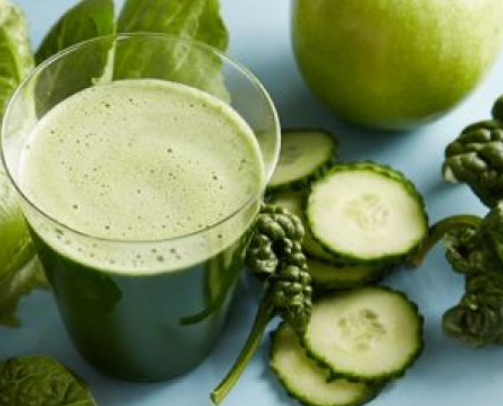
One common use of lettuce greens is juicing. Parris Island lettuce is an ideal juicing lettuce on account of its reputation as highly nutritious. This recipe produces a single serving of nutrients rich green juice. The recipe calls for two large Parris Island romaine leaves, juicy lemons, Granny Smith apples, and chia seeds amongst other ingredients.
The ingredients are put through a good juicer (example), one at a time and the final product is served after leaving it to sit for some 5 minutes when the chia seeds are added. Double the ingredients if you wish to make for two. View Recipe.
Growing Parris Island Lettuce
Parris Island romaine lettuce, like all Lactuca sativa lettuce, is a cool season vegetable. The soil in which the lettuce is raised must be cool, loose and well draining. Compost and manure may be mixed into the soil to increase drainage over and above nourishing the base growing medium.
There are two ways to start growing Parris Island lettuce – from seed or transplants. When sown directly from seed, it must be remembered that this lettuce has very tiny seeds. For this reason, care must be taken to avoid burying the seeds too deep. The recommended way of doing it is to sow the seed very shallow at about 1/8 inch or 3mm deep and lightly cover the seed by sprinkling fine soil i.e. with no debris that could suppress the seeds.
Once the seeds have germinated and show signs of good health and progress, thinning follows as an important way of spacing the lettuce. The seemingly weak ones are targeted first. The goal is to achieve a spacing of 8 to 12 inches or 20 to 30cm apart. This same spacing is to be maintained even when Parris Island lettuce is grown from nursery supplied transplants, for example.
Although Parris Island Cos romaine lettuce has resistance to lettuce mosaic virus (LMV) and tipburn (TB) it is prone to other diseases and pests that affect lettuce. Nonetheless, most home growers are often successful in raising this romaine lettuce type without resorting to the use of chemicals.
Growing Parris Island Lettuce in Containers
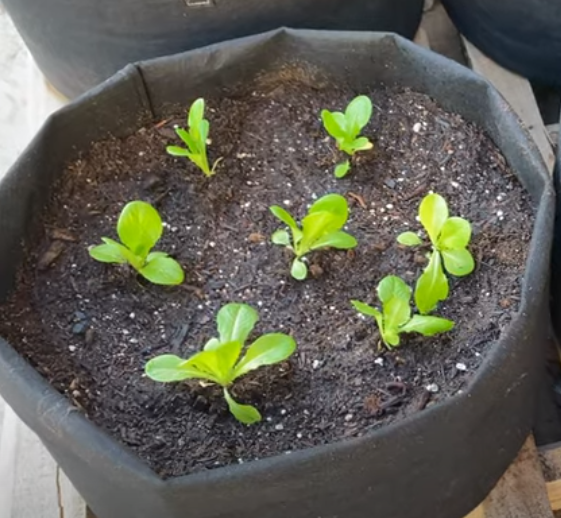
Parris Island lettuce can be easily grown in containers by following the correct steps. The grower will first need to decide if they are growing the lettuce for mature heads or just for the leaves. Parris Island romaine lettuce grown for cut-and-come-again leaves can be directly sown in the smaller size containers with less regard to spacing.
Lettuce raised in small containers with limited spacing will not develop into mature heads. The lettuce will produce many small leaves which can be used in salads and sandwiches.
However, if growing Parris Island lettuce for the heads, the lettuce should be in big enough containers of necessary depth and diameter. The plants can be started from seed or as transplants. Whichever the case, thinning must be done in the case of growing for heads to the spacing specified below.
Although any good size container can work to grow Parris Island lettuce for heads, we recommend 5 gallon fabric containers (example) for this purpose. The container will not need any holes beneath. Excess water will escape the pot through the fabric itself.
Furthermore, the lettuce plants should have a spacing of at least 8 inches or 20cm apart to eliminate competition for nutrients between plants. The greater the spacing the bigger the heads will grow to their full potential.
The soil quality used when growing lettuce in pots is generally similar to that used when growing in the ground. The fundamentals are that the soil must be well draining and also nutrient rich.
Ordinary garden soil mixed with compost and peat moss will do well as a growing medium for Parris Island romaine lettuce. The compost manure in the soil will supply the necessary nitrogen to encourage lush leaves.
This can also be achieved by using water soluble nitrogen fertilizers which are applied every 2 to 3 weeks. Fish emulsion (example) is such one good source of nitrogen for lettuce plants.
Conclusion
Parris Island lettuce is a legitimate Lactuca sativa romaine lettuce cultivar that was developed in the United States. The lettuce is considered to have the highest nutritional values among many green lettuce varieties. Parris Island Cos is flavorful compared to certain other green lettuces. It is used in a variety of culinary recipes including salads, juices, on sandwiches and even grilled. Furthermore, the lettuce is fairly easy to grow both in the ground and in containers. It is well known for its resistance to certain lettuce diseases.
Random But Good Reads:-
